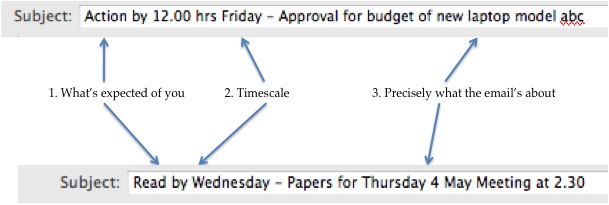2012 and the future of email. Where will email stand as a communications channel in 2012? Two events at the end of 2011 sparked many to speculate that we maybe witnessing the beginning of the end for email. First, the recent edict by Thierry Breton (Altos CEO) to ban the use of email for internal communications. Second, was VW’s union negotiation to stop automatically sending emails to Blackberry devices after the working hours.
But are these either simply attempts to cover up much deeper cultural and management issues or is this really the beginning of the end for email? Have we reached a tipping point where newer channels will take over from email? Alternatively, will email overload continue to dominate and with it the added stress of email addiction?
It helps to look at the numbers. For example, Mark Brownlow estimates that email is more popular than Elvis, the Beatles and chocolate but not sex. If we printed every non spam email, in just under two hours we would have enough paper to cover the USA continent. If all the email accounts were people, the email population would be 2.3 times the size of China.
Radicati the US research group estimate that a typical business user now receive and send on average 110 emails per day. Overall we send about 394 billion emails per day and that is predicted to rise to nearly double by 2013.
Basex another US market research group estimate that we spend half our day simply processing emails and that in the USA information overload (derived from email overload) costs US business 28 billion lost hours of productivity per year. They estimate that it costs about $100 to produce a sheet of A4.
Nearer home Mesmo Consultancy’s own analysis reveals that only a fifth of people need more than 75% of the emails they receive. Mesmo Consultancy finds that business users waste on average one hour per day through email overload and email misuse (eg poor email etiquette which results in endless rounds of email ping-pong and worse still some form of litigation).
My view is not that we are witnessing the end of email but rather the start of concerted campaigns by business to combat email overload and addiction in order to gain more from this all embracing and powerful communications tool. Email has become the norm for business communications and transactions. It has supplanted the letter and (sadly) often talking.
It has become so pervasive that it is likely to be with us for at least the next five to ten years. In these austere times no business regardless of size and sector can afford to lose one hour a day per person when some simple basic steps can be undertaken to reclaim such lost time.
Some have suggested that social media will replace email. However, can you do many of today’s common place business tasks by social media for example, send a quotation, negotiate a sale, book leave, discuss a contract etc? Maybe in five years time when everyone is using these media just as they are email but not in 2012.
So what might 21012 hold for email. Here are Mesmo Consultancy’s five predictions.
1. Email charters will grow in use and popularity.
More organisations will adopt some form of an ‘Email Charter’ as they seek to enable people to change their email behavior to improve productivity and combat email overload (and the stress which accompanies email overload).
2. Email archiving will continue to be important.
Businesses will want to and need to be able to save and find key emails which contain corporate history. At the same time they will need to free up valuable server space.
3. Email etiquette will be top of the list for any self-respecting Communications Director
In this highly competitive environment they strive to re-enforce brand image and build customer satisfaction. In a nanosecond a poorly written email can destroy a valuable relationship built over many years.
4. Effective personal email management will become increasingly important. This includes both how you manage your inbox and how you use the email software to help you.
The best HR Directors will provide business people with email best practice training whether in workshops or though on-to-one coaching and webinars. Meanwhile, their fellow CIOs and IT Directors will look for to software addons to automate the more mundane aspects of inbox management (such as filing emails).
5. Compliance and security will continue to be high on the IT Directors (and CIOs) agenda.
First, as cyber crime rises and cleaning up after a cyber attack gets more costly no IT Director (or CIO) will want to have the blame for a cyber attack laid at their doorstep. Second, as we are seeing and especially in the Public Sector the relationship between email usage and the law in increasingly coming under scrutiny.
In 2012 will undoubtedly witness an increase in the range of other media used (such as social media and instant messaging), email looks set to retain its prominence as the preferred channel for business.
Tags: email best practice, email etiquette, email overload
Thierry Breton’s (Altos CEO) declared goal to ban all internal email by 2014 has prompted many to review the role of email as a communcations media. See for example Maija Palmer of the Financial Times. There are now several groups focused on reducing the email dependency and trying no email days to help reduce the email overload factor.
One particular theme which has recurred in most articles and discussions is how we are allowing email to shape us rather than shape it to our needs. For those interested in reading more about the impact of both email and social networking on our working lives here is my Christmas reading list.

Alone Together by Sherry Turkle
The Filter Bubble by Eli Pariser
The Winter of our Disconnect by Susan Maushart
The Erosion of Attention and the Coming Dark Age by Maggie Jackson
Meanwhile if you want to knock your inbox into shape for the new year then you can always come on one of our ninety minute Brilliant Email Master Classes.
Tags: email best practice

Here is a summary of the key points from Friday 10 December with Geoff Carter on The Bay 102.8 FM
1. E-cards
A great way to give to charity and be green. Some good sites for e-cards are:
Free – but make sure you are not inundated with advertisements etc.
Remember to send not just to friends, family and all business contacts but also all those you meet networking.
2. Donate to charity instead of buying presents
For example, with WaterAid, £12 buys two water taps and £50 buys a water pump. See http://shop.wateraid.org/.
For other charities see www.presentaid.org/
3. Dealing with you email over the holiday
Top three tips to reduce the email stress.

For more tips like these see my latest book ‘Brilliant Email’
4. Keep safe and private on social networking sites Don’t boast about what Santa gave you as that encourages cyber crime. Try to make sure you avoid appearing in those silly party photos on Facebook etc. Make sure you are not tagged in other people’s photos. Check your Facebook Privacy Settings carefully and select who you want to give access to for your photos. With children make sure they are properly protected from prying eyes and not on social networks for too long. There is life outside the world of computer games and social networking.
For tips like these sign up for the free Mesmo Consultancy monthly e-briefing.
Tags: email best practice
The volume of email traffic is steadily growing despite those who think email is in decline. Many people now receive between 60 to 100 emails per day. How can you ensure that the recipient sees and deals with your email? Good email etiquette is the key.
Here is what constitutes poor email etiquette and will ensure your email sinks to the bottom of the other person’s inbox!
Excellent email etiquette in the form of a clear concise and meaningful subject line is the best way. Here are a couple of examples from my book ‘Brilliant Email‘ .

Writing compelling subject lines has always been critical. Points to note about these two examples are:
Think of the subject line as the newspaper headlines. What your say in subject line will either draw in the recipient or cause them to skip on to the next email.
Email best practice for subject lines includes trying to say it in the subject line. For example, ‘Meeting moved to Room 101 – EOM’. EOM means End of Message. That saves everyone time. The recipient doesn’t need to open the email and you do not need to spend time deploying good email etiquette to write the body of the email. Tesco recently had just such an email best practice campaign to help their employees save time.
This weeks tips and hints will focus on writing brilliant eye catching email subject lines.
Need some more help? You can always either come on one of our Brilliant Email Master Classes or buy the book.
Meanwhile I’d love to hear from you what annoys you about how people write their subject lines and what tips can you offer to help them.
Tags: email best practice, email etiquette, email subject line
Managing change follows the same seven step process show below no matter what you try to change – from the simple, moving desks to the more complesx, changing email behavior.

Tags: email best practice, email management, email overload, email stress